-
Permanent, invitation-only visa for individuals with exceptional and outstanding achievements
-
Open to applicants with an internationally recognised record in priority sectors (such as technology, research, innovation, business, arts, or academia)
-
Must submit an Expression of Interest (EOI) and receive an invitation before applying
-
Achievements should demonstrate global recognition, leadership, or significant impact in the field
-
Ability to contribute to Australia’s economic, social, or cultural growth
-
No points test, employer sponsorship, or age limit applies
-
Must meet health and character requirements as per Australian immigration rules
Migrate to Australia
Sign up for a free expert consultation
Don't know what to do?
Get Free Counseling
Eligibility criteria for Australia immigration
Generally, for Australia immigration, the major requirement is a minimum score of 65 points for an Australian work visa. However, if your score is between 80-85, there are more chances for Australian immigration along with a PR visa. The score is calculated based on age, education, qualification, work experience, adaptability, etc.
Educational Profile
Professional Profile
IELTS score
Skill assessment by certified authorities in Australia
References & legal documentation
Australian Employment documentation
Why Immigrate to Australia from UK?
- 480,000+ job vacancies across Australia (2025)
- Average full-time salary: AUD 98,000 per year
- 2 million UK-born residents in Australia
- Fast-track PR and citizenship in 4–5 years
- Ranked in global top 10 list for healthcare quality
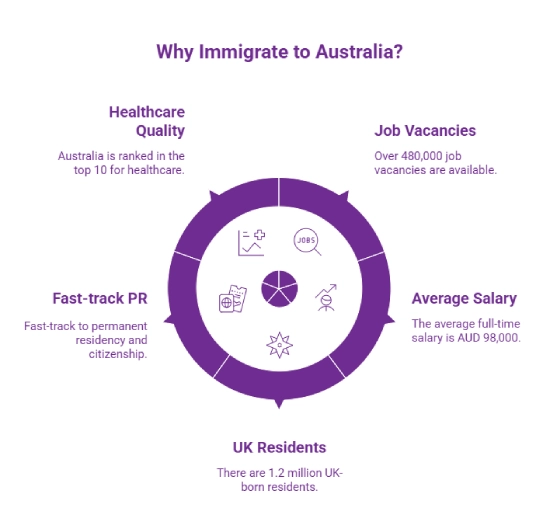
Migrate to Australia from UK
Australia remains a top destination for UK nationals seeking long-term opportunities abroad. With strong demand for skilled professionals across sectors, high average salaries, and a well-established British expat community, the country offers both economic and lifestyle benefits. Australia’s world-class healthcare system, high quality of life, and clear pathway to permanent residency and citizenship make it an ideal choice for those planning to build a future overseas. Whether you're pursuing career growth or a better work-life balance, Australia offers a welcoming and rewarding environment for UK migrants.
List of Australia Visas for UK Residents
Australia offers a range of visa options for visitors, students, professionals, and families based on purpose and eligibility.
- Australia Visit Visa
- Australia Student Visa
- Australia Training Visa
- Australia Work Visa
- Australia Family Visas
- Australia Skilled Visas
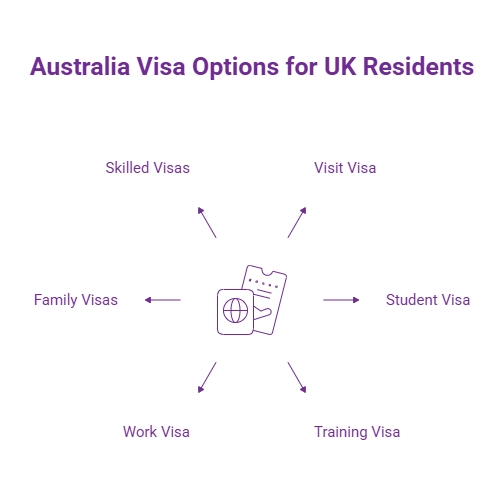
Australian Visa Pathways
Australia offers multiple visa pathways tailored to different goals such as skilled employment, family reunification, employer sponsorship, innovation, and short-term work experiences. Popular options include points-tested skilled visas (189, 190, 491), employer-nominated permanent visas (186), family-sponsored visas, and innovation-focused pathways like the National Innovation Visa (Subclass 858). Each pathway has clear eligibility criteria and provides a structured route to temporary stay, permanent residency, and eventually Australian citizenship.
Skilled Stream (General Skilled Migration: 189, 190, 491)
Points-tested visas for invited skilled workers through SkillSelect. Subclasses 189 and 190 grant permanent residence; 491 is a provisional regional visa that can lead to PR if post-grant criteria are met. Applicants typically need a suitable skills assessment, an eligible occupation, and to meet the points threshold at time of invitation.
Family Stream
Visas that let partners, parents, children, and other eligible relatives of Australian citizens, permanent residents, or eligible New Zealand citizens live in Australia. Requirements, stages (temporary/permanent), and processing times vary by subclass; all applicants must meet health and character checks.
Employer Nomination Scheme (ENS) – Subclass 186
A permanent residence pathway where an Australian employer nominates a skilled worker. Streams include Direct Entry, Temporary Residence Transition, and Labour Agreement, each with stream-specific skill, English and (where relevant) age criteria alongside an approved nomination.
Global Talent Visa - National Innovation Visa (Subclass 858)
The former Global Talent visa is closed to new applications. Its replacement, the National Innovation visa (858), is a permanent, invitation-only visa for people with an internationally recognized record of exceptional and outstanding achievement in priority fields; candidates submit an EOI and may be invited to apply.
Working Holiday Visa
The Working Holiday visa program allows young adults to travel and work in Australia for up to 12 months. It gives an opportunity to fund your holiday through short-term employment while experiencing Australian culture and lifestyle.
What is the Subclass 417 – Working Holiday Visa?
The Subclass 417 Working Holiday Visa allows eligible young adults to travel to Australia while working and studying for up to 12 months. It is designed to promote cultural exchange and gives applicants the flexibility to take up short-term employment to fund their stay. Those who complete specified work in designated regional areas may qualify for a second or even third Working Holiday Visa, extending their time in Australia.
- For applicants aged 18–30 (or up to 35 for some countries).
- Allows travel, work, and study in Australia for 12 months.
- Option to apply for a second or third visa if you complete specified work in regional Australia.
What is the Subclass 462 – Work and Holiday Visa?
- For applicants aged 18–30 from eligible countries.
- Requires additional eligibility criteria such as education and English proficiency.
- Similar stay and work rights to the Subclass 417 visa, with the option for extensions after regional or specified work.
Benefits of Australian Immigration
Migrating to Australia offers a well-rounded lifestyle, strong career prospects, and a clear path to long-term settlement for individuals and families.
- Skilled professionals are in high demand across various industries
- Enjoy an average annual salary of around AUD 98,000
- Access public healthcare through Medicare as a resident
- Live in a safe, inclusive, and culturally diverse society
- Follow a transparent pathway to Permanent Residency and citizenship
- Benefit from excellent education options for children and young adults
- Experience a healthy work-life balance supported by strong employee rights
Eligibility for Australia Immigration
To immigrate to Australia, applicants must meet specific criteria based on the visa stream they are applying under.
The general eligibility criteria for Australian immigration is as follows:
- Age (usually under 45 for skilled visas)
- Occupation listed on Australia's Skilled Occupation List (SOL or CSOL)
- Positive skills assessment from a relevant assessing authority
- Competent English language proficiency (IELTS, TOEFL, PTE, etc.)
- Minimum points score (typically 65 points for General Skilled Migration)
- Valid sponsorship or nomination (if applicable)
The table below has breakdown of the categories and points allotted for each in the points-based system:
|
Category |
Maximum Points |
|
Age (25-32 years) |
30 points |
|
English proficiency (8 bands) |
20 points |
|
Work Experience outside Australia (8-10 years) |
15 points |
|
Work Experience in Australia (8-10 years) |
20 points |
|
Education (outside Australia) – Doctorate degree |
20 points |
|
Niche skills such as Doctorate or master’s degree by research in Australia |
10 points |
|
Study in a regional area |
5 points |
|
Accredited in community language |
5 points |
|
Professional year in a skilled program in Australia |
5 points |
|
State sponsorship (190 visa) |
5 points |
|
Skilled spouse or de facto partner (Age, Skills & English language requirements to be met) |
10 points |
|
Spouse or de facto partner with ‘competent English’ (No need to meet Skills requirement or age factor) |
5 points |
|
Applicants without a spouse or de facto partner or where a spouse is an Australia citizen or PR holder |
10 points |
|
Relative or regional sponsorship (491 visa) |
15 points |
*Want to check your eligibility to Australia? Try the FREE Y-Axis Australia immigration points calculator and get an instant score!
Requirements for Australian Immigration
The requirements for Australian immigration are as follows:
- A valid passport
- Occupation listed on the relevant Skilled Occupation List
- Positive skills assessment from a designated authority
- English language proficiency (e.g., IELTS, PTE, TOEFL)
- Minimum 65 points for skilled migration visas
- Health and character clearance
- Proof of sufficient funds (if required)
- Nomination or sponsorship (for employer/state-sponsored visas)
- Completed visa application and payment of applicable fees
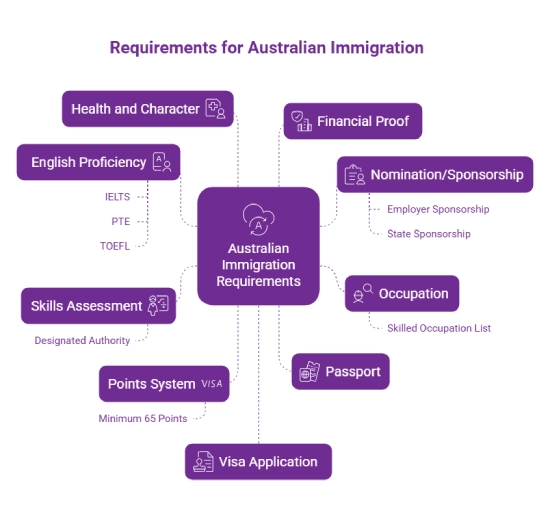
How to get Australian PR from the UK?
If you are a UK resident planning to settle in Australia permanently, the General Skilled Migration (GSM) program is one of the most common routes.
Given below is a step-by-step process to get permanent residency in Australia:
Step 1: Check Your Eligibility
Ensure your occupation is listed on Australia's Skilled Occupation List and that you meet the age, English language, education, and work experience requirements.
Step 2: Get a Skills Assessment
Apply for a skills assessment through the relevant assessing authority for your occupation. A positive result is mandatory to proceed.
Step 3: Take an English Language Test
Demonstrate your English proficiency through accepted tests like IELTS, PTE, or TOEFL if required for your visa type.
Step 4: Calculate Your Points
Use the Department of Home Affairs’ points calculator. You need at least 65 points to be eligible for most skilled visas.
Step 5: Submit an Expression of Interest (EOI)
Create a profile in SkillSelect and submit your Expression of Interest for a skilled visa such as Subclass 189, 190, or 491.
Step 6: Receive a Visa Invitation
If your EOI is selected, you’ll receive an invitation to apply for the visa. Invitations are issued based on your points and occupation demand.
Step 7: Apply for the Visa
Complete your visa application online through the ImmiAccount portal within 60 days of receiving the invitation.
Step 8: Wait for the visa status
The Department of Home Affairs will assess your application. If approved, you will be granted a permanent residence visa.
Australia Visa Processing Time
The table below has complete details of the average processing time for different Australian visa types:
|
Type of Australia Visa |
Processing time |
|
Visit visa |
20 to 30 days |
|
Student visa |
1 to 3 months |
|
Training visa |
3 to 4 months |
|
Work visa |
2 to 8 months |
|
Family and partner visas |
23 to 30 months |
|
Skilled visas |
6.5 to 8 months |
|
PR visa |
8 months to 10 months |
Australia Visa Fees
The table below has complete details of the processing fee for the three major Australian PR visa pathways:
|
Category |
Fee Effective from 1st July 24 |
|
Subclass 189 |
Main Applicant -- AUD 4765 |
|
Applicant above 18 yrs -- AUD 2385 |
|
|
Applicant below 18 yrs -- AUD 1195 |
|
|
Subclass 190 |
Main Applicant -- AUD 4770 |
|
Applicant above 18 yrs -- AUD 2385 |
|
|
Applicant below 18 yrs -- AUD 1190 |
|
|
Subclass 491 |
Main Applicant -- AUD 4770 |
|
Applicant above 18 yrs -- AUD 2385 |
|
|
Applicant below 18 yrs -- AUD 1190 |
Estimated relocation costs in Australia
| Spending category (ABS) | Average weekly cost (AUD) |
| Current housing costs (selected dwelling) | $279 |
| Domestic fuel & power | $41 |
| Food & non-alcoholic beverages | $237 |
| Alcoholic beverages | $32 |
| Tobacco products | $13 |
| Clothing & footwear | $44 |
| Household furnishings & equipment | $58 |
| Household services & operation | $45 |
| Medical care & health expenses | $82 |
| Transport | $207 |
| Communication | $47 |
| Recreation | $172 |
| Education | $44 |
| Personal care | $29 |
| Miscellaneous goods & services | $97 |
| Total goods & services | $1,425 / week |
Australia Permanent Residence
Australia offers several permanent visa options that allow individuals and families to live, work, and settle in the country indefinitely. The most popular routes include skilled visas under the General Skilled Migration (GSM) program and family sponsorship visas. These visa types not only provide long-term residence but also open the door to Australian citizenship over time.
As a permanent resident of Australia, you are entitled to many of the same benefits as Australian citizens, including:
- The right to live, work, and study anywhere in Australia without restrictions
- Access to Medicare, Australia’s public healthcare system
- The ability to sponsor eligible family members for permanent residency
- Permission to travel in and out of Australia freely for five years from the visa grant date
- Eligibility to work in New Zealand without a separate work visa
- Access to public education for dependent children and certain social security benefits (after waiting periods)
- A pathway to Australian citizenship, subject to meeting residency and character requirements
*Want to apply for an Australian PR visa? Let Y-Axis guide you with the process.
Australia Immigration Pathways
Australia offers several structured routes for individuals seeking to live, work, or settle permanently in the country. These key immigration pathways include:
- Skilled Migration Program
- Business and Investor Migration
- Employer-Sponsored Migration
- Permanent Residency via Skilled Work Stream
- Permanent Residency through Family Sponsorship
- Permanent Residency under Investment Stream
Australia Skilled Migration
Australia’s Skilled Migration program is designed to attract qualified professionals from around the world to meet the country’s labour market needs. This points-based immigration system offers a pathway to permanent residency for individuals with in-demand skills, work experience, and strong English language proficiency.
Eligible applicants must meet specific criteria including age, qualifications, work experience, English ability, and occupation relevance as outlined in the Skilled Occupation List (SOL). Points are awarded based on these factors, and candidates with higher scores are more likely to receive an invitation to apply for a skilled visa.
Popular visa subclasses under the Skilled Migration program include:
- Skilled Independent Visa (Subclass 189): For skilled workers who are not sponsored by an employer or state/territory.
- Skilled Nominated Visa (Subclass 190): For those nominated by an Australian state or territory government.
- Skilled Work Regional (Provisional) Visa (Subclass 491): For skilled workers who wish to live and work in regional Australia.
Skilled migration is one of the most sought-after immigration pathways, offering a direct route to permanent residency and, eventually, Australian citizenship. The program not only supports Australia's economic growth but also provides long-term stability and opportunities for skilled migrants and their families.
Jobs in Australia for UK Residents
Australia offers a strong job market with high demand for skilled professionals across sectors like healthcare, IT, engineering, and construction. Competitive salaries, a stable economy, and a high quality of life make it an attractive destination for global talent.
|
Occupation |
Annual Salary in (AUD) |
|
IT |
$99,642 – $ 115, 000 |
|
Marketing & Sales |
$84,072 – $103,202 |
|
Engineering |
$92,517 – $110,008 |
|
Hospitality |
$60,000 – $75,000 |
|
Healthcare |
$101,569- $169279 |
|
Accounting & Finance |
$77,842 – $92,347 |
|
Human Resources |
$80,000 – $99,519 |
|
Construction |
$72,604 – $99,552 |
|
Professional and Scientific Services |
$90,569 – $108,544 |
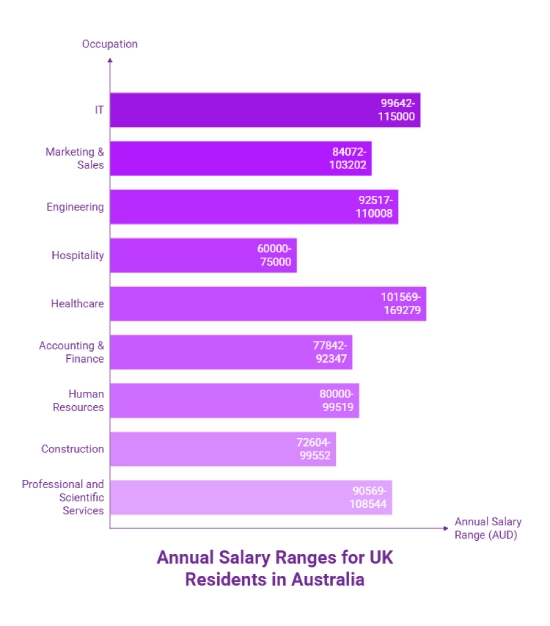
*Looking to work in Australia? Avail Y-Axis Job Search services to assist you with the job search process.
Australia Immigration Planning Levels 2024-25
The Australia Immigration Planning Levels for 2024–25 outline the number of permanent visas to be granted across skilled, family, and special eligibility streams. The program is designed to address labour shortages, support economic growth, and reunite families.
|
Skill Stream Visa |
|
|
Visa Category |
2024-25 Planning Levels |
|
Employer-Sponsored |
44,000 |
|
Skilled Independent |
16,900 |
|
State/Territory Nominated |
33,000 |
|
Regional |
33,000 |
|
Business Innovation & Investment |
1,000 |
|
Global Talent Independent |
4,000 |
|
Distinguished Talent |
300 |
|
Skill Total |
1,32,200 |
|
Family Stream Visa |
|
|
Visa Category |
2024-25 Planning Levels |
|
Partner |
40,500 |
|
Parent |
8,500 |
|
Child |
3,000 |
|
Other Family |
500 |
|
Family Total |
52,500 |
|
Special Category Visa |
|
|
Special Eligibility |
300 |
|
Grand Total |
1,85,000 |
Projected employment growth in Australia (2023-26)
The table below has a complete overview of the estimated employment growth in Australia from 2023 to 2026:
|
Sector |
Projected Job Opportunities (2023 to 2026) |
|
Health Care and Social Assistance |
301000 |
|
Professional, Scientific and Technical Services |
172400 |
|
Education and Training |
149600 |
|
Construction |
118800 |
|
Accommodation and Food Services |
108900 |
|
Transport, Postal and Warehousing |
62100 |
|
Administrative and Support Services |
59700 |
|
Retail Trade |
51900 |
Australia Skills Assessment
A skills assessment is a crucial part of the Australian immigration process for skilled visa applicants. It verifies that your qualifications and work experience meet Australian standards for your nominated occupation. The assessment must be completed by an approved assessing authority relevant to your occupation and is often required before you can apply for a skilled visa.
Key factors considered during a skills assessment include:
- Relevant educational qualifications
- Years and relevance of skilled work experience
- English language proficiency (if applicable)
- Alignment of your occupation with the Skilled Occupation List (SOL)
- Certifications or licensing required for the occupation
- Country where the qualifications and work experience were obtained
Note: Each occupation has a specific assessing authority, and the process, fees, and documentation requirements can vary. A positive skills assessment is usually valid for 2–3 years and is mandatory for most skilled migration pathways such as Subclass 189, 190, or 491.
Australia Settlement Guide: Housing, Healthcare, Banking & More
Finding accommodation
- Expect a rental bond (usually up to 4 weeks’ rent), lodged with the state/territory bond authority.
- Complete the condition report at move-in and keep copies of all documents/receipts.
- You may be asked for up to 2 weeks’ rent in advance; know your rights on repairs and notice periods.
- Avoid scams: inspect properties (or use a trusted agent) before paying money.
Healthcare & Medicare
- Citizens and most permanent residents can enrol in Medicare; some temporary residents are eligible under specific rules/agreements.
- Enrol for a Medicare card after arrival (ID and supporting documents required).
- If you’re not eligible, arrange private health insurance for medical costs.
Banking & finances
- Open an Australian bank account (passport/ID required) and compare account fees/features.
- Apply for a Tax File Number (TFN)—it’s free and needed for work and tax.
- If employed, set up superannuation (retirement fund) and keep pay/tax records.
- Budget for upfront costs (bond, rent in advance, utilities connection, transport).
Path to citizenship
- Typical rule: 4 years lawful residence, including the last 12 months as a permanent resident, with limited time spent outside Australia.
- You must meet character requirements and (for most applicants 18–59) pass the citizenship test.
- Keep travel and residency records to check your eligibility before applying.
- Timeframes vary (application → decision → ceremony); follow your grant instructions exactly.
How can Y-Axis help you?
Y-Axis is the leading immigration consultant for individuals looking to migrate to Australia. Our end-to-end support with the immigration process ensures that you make the right decision at every step. We guide you with:
- Free eligibility check through Australia Immigration Points Calculator
- Expert guidance/counseling for Australian Immigration
- Coaching services: Expert CELPIP coaching, IELTS proficiency Coaching
- Free career counseling; book your slot today
- Complete guidance for Australia PR visa
- Job search services to find jobs abroad
Our Accreditations |
|||
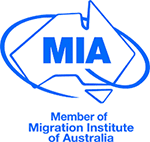 |
 |
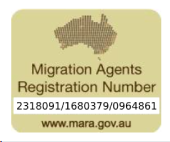 |
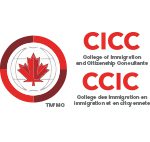 |
Looking For Inspiration
Explore what Global Citizens have to say about Y-Axis in shaping their future
Frequently Asked Questions
